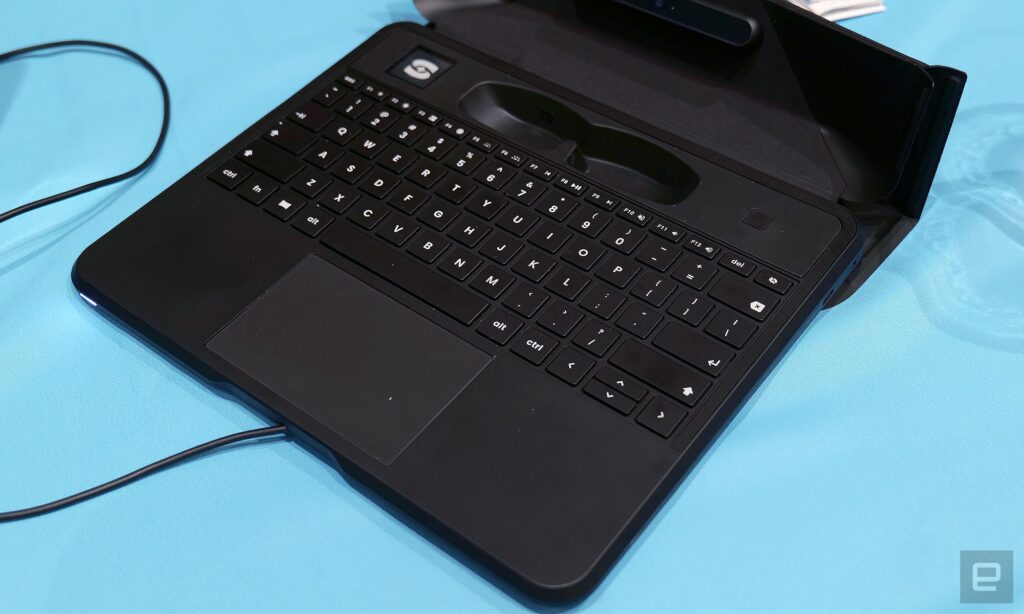There are many companies today trying to figure out new and better ways of working. Lenovo made a laptop with two displays and a detachable keyboard to help give users more screen real estate without adding too much bulk. Headsets from Meta, Apple and others offer a way to create a fully virtual workspace without needing to be connected to a PC. But for Spacetop, startup Sightful has come up with an intermediate solution that uses the bottom of a laptop, but instead of a traditional display, connects to a pair of AR glasses.
In theory, the glasses offer a 100-inch virtual display that can accommodate more windows than a traditional laptop screen. Because Spacetop is powered by Android, you also get a familiar work environment. There are no controllers or gestures, but instead a typical keyboard and trackpad for writing, browsing the web, or anything else you might need to do. But after trying it out at CES 2024 in Las Vegas, while I like the idea, I’m not quite sure how well Sightful will execute.
The system is powered by a Qualcomm Snapdragon XR2 chip (the same Meta processor used in 2020’s Quest 2), with only 8GB of RAM and 256GB of storage. It feels smooth, although I wouldn’t necessarily say it’s fast. I didn’t notice much lag when dragging windows or typing, but I didn’t see how it would handle a large number of open apps or anything more demanding than a web browser. Sightful also provides some simple shortcuts for doing things like re-centering the screen (just hold down the left and right Shift keys at the same time).
The problem I’m having is that while Sightful develops the base for the laptop itself and puts its logo on the side of the glasses, the bundled AR glasses that connect to the PC are actually off-the-shelf specs from Xreal (in this case, the Xreal Light) . So while the Xreal glasses are somewhat sharp, their narrow field of view (especially vertically) and smaller sweet spot leave a lot to be desired when it comes to actually using a 100-inch virtual display.
Additionally, the Spacetop’s keys feel spongy and the trackpad is lackluster. It’s a far cry from the more precise tactile surfaces you get on a fancy Mac or Windows PC. When you combine all of this with a starting price of $2,000, I just don’t see the appeal. For people who already own a laptop, I think you’re better off buying the Meta Quest 3, which costs $500 and has a newer chip that can sync with your laptop to create your own version of a virtual desktop. Plus, you’ll have a headset that’s better suited for gaming, watching movies, and more.
There’s a reason Meta, Apple, and other companies invest billions of dollars into making headphones and glasses with finely tuned optics. I’m sure one day (maybe even sometime in the next few years) there will be some pretty big advances in off-the-shelf AR glasses. But with its high price, outdated specs, and a large but unsightly virtual display powered by two-year-old AR glasses, the Spacetop didn’t quite deliver on its promise to revolutionize the average laptop.
We will provide live coverage of CES 2024, which will be held in Las Vegas from January 6th to 12th.Get all the latest news from the show here.
This article originally appeared on Engadget at https://www.engadget.com/the-spacetop-is-a-laptop-that-really-wants-to-swap-your-screen-for-ar-glasses-ces -2024 -233638523.html?src=rss
Source link
